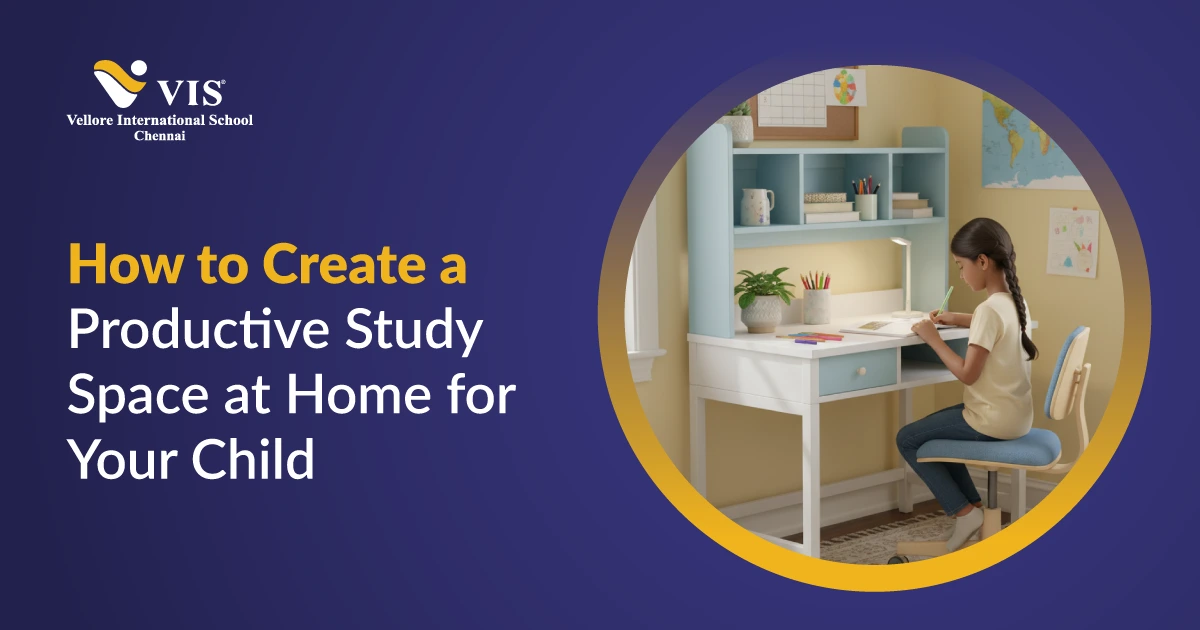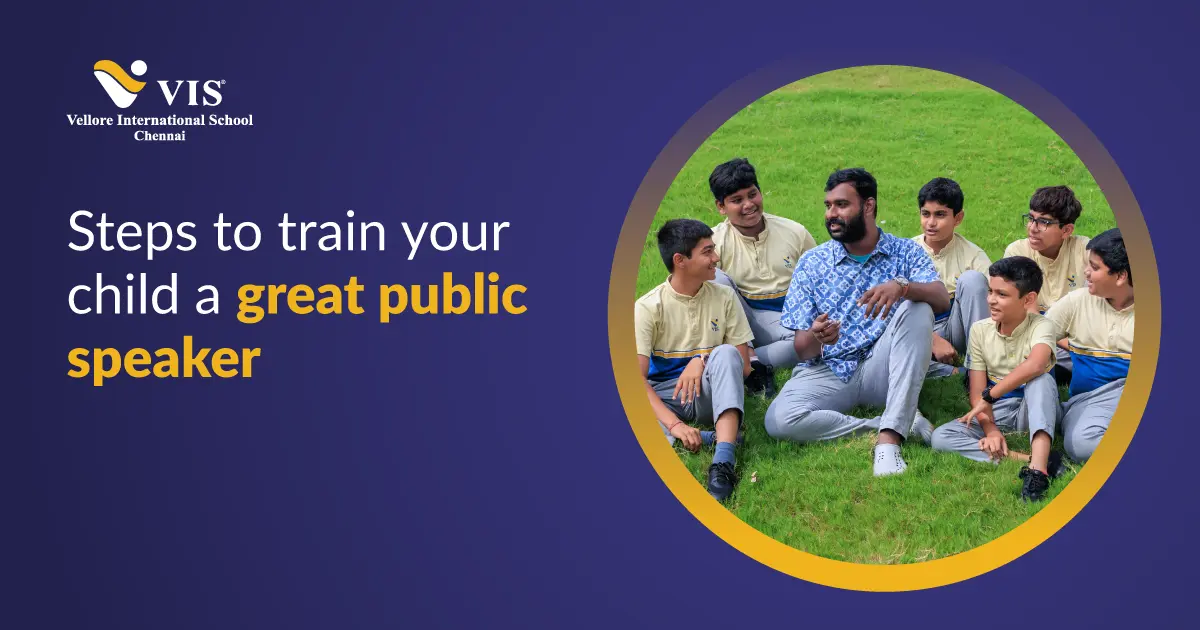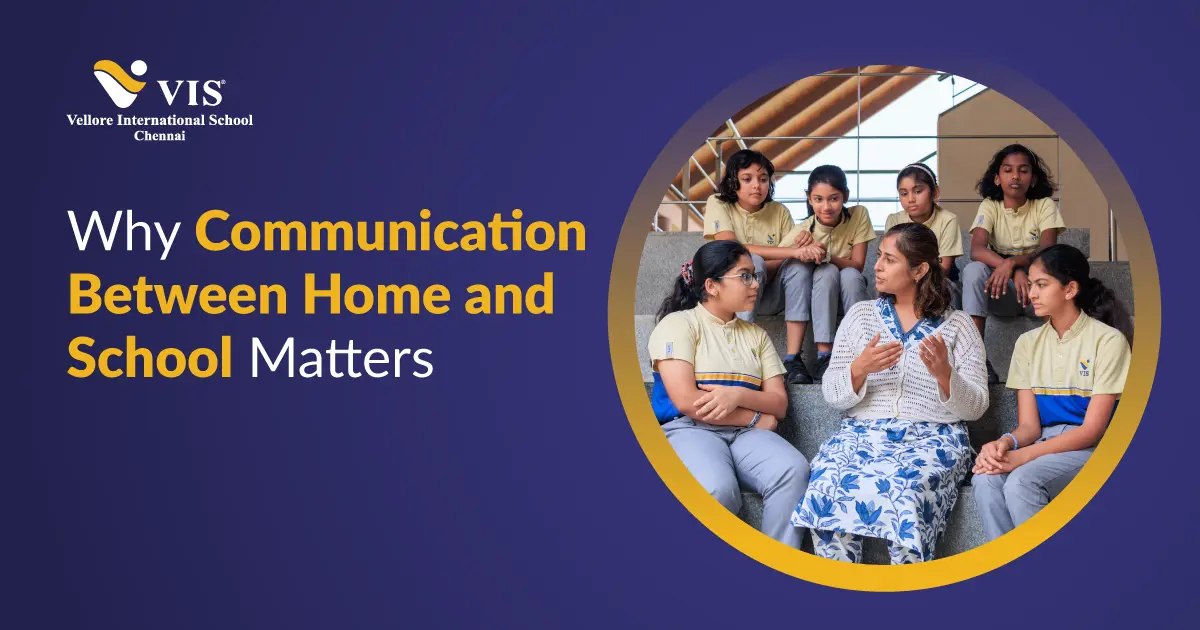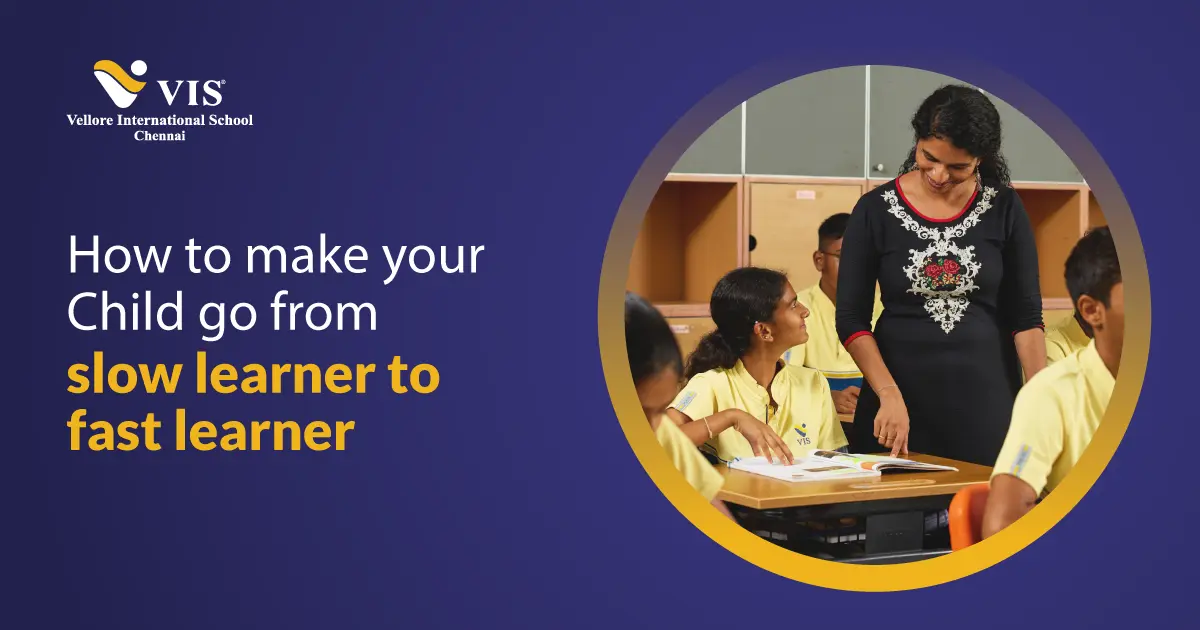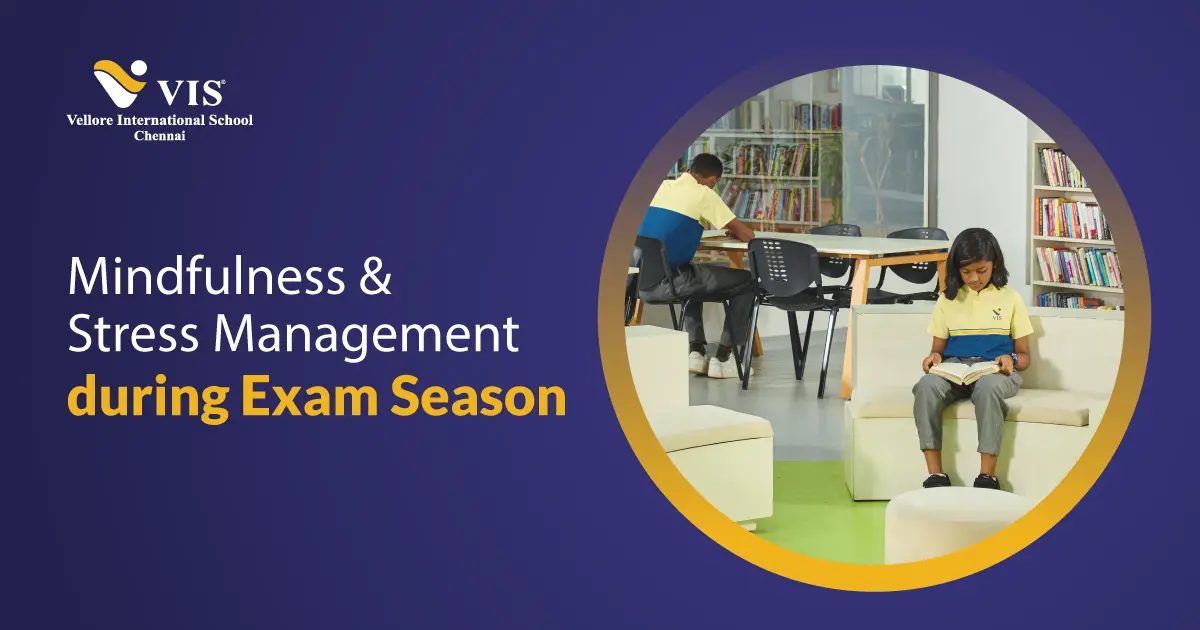Have you ever watched a confident child walk up to a stage, hold the microphone, and speak with clarity, enthusiasm, and presence and wondered, “How did they learn to do that so well?” The truth is, public speaking is not just a talent. It’s a trainable life skill.
With the right guidance, environment, and training for public speaking, any child can blossom into an articulate, expressive, and persuasive speaker. This blog is your entire guide to training your child to become a great public speaker.
Steps to Train Your Child to Become a Great Public Speaker
1. Start Early: Make Speaking a Natural Habit
One of the biggest myths about public speaking is that children need to “grow up” before they can start. In reality, the earlier you introduce training for public speaking, the easier it becomes for them to internalise speaking skills naturally.
Why early exposure matters
- Early conversations help build vocabulary and fluency.
- When children are encouraged to speak at home, they feel valued and heard.
- Early experiences prevent stage fright from forming in the first place.
Start with small, everyday opportunities:
- Ask your child to narrate their day like a storyteller.
- Let them explain a recipe, an activity, or even their favourite cartoon.
- Encourage them to speak to family members during gatherings.
These simple habits lay the foundation for structured training for public speaking later on.
2. Build a Strong Communication Foundation
Before children can speak in public, they must master basic communication: listening, organising thoughts, and expressing ideas clearly. Effective public speaking starts at home through conversation.
Practical ways to build communication skills:
- Play “repeat after me” or “story continuation” to improve listening and comprehension.
- Ask them to describe events in sequence: beginning, middle, and end.
- Introduce new words during dinner conversations and ask them to use those words in sentences.
Children who learn to structure their thoughts at home progress much faster when they enter formal training for public speaking programs.
3. Teach Through Fun and Play
Children learn best when they’re having fun. Instead of making public speaking seem like a chore, gamify the learning process.
Fun activities for public speaking training:
- Sit as a family, start a story, and let each member add a line.
- Let your child bring a favourite object and explain why they love it.
- Pick a random word and ask your child to speak about it for 30 seconds.
These playful methods turn training for public speaking into an enjoyable activity that builds creativity, spontaneity, and confidence.
4. Focus on Structure: Teach Them How to Organise a Speech
Good speakers don’t just talk, they structure their message clearly. Teaching children how to organise their thoughts makes their speeches impactful and easy to follow.
Basic structure to teach:
- Introduction: Start with a greeting and a hook.
- Body: Present 2 – 3 main points with examples.
- Conclusion: Summarise and end confidently.
Start by helping your child structure small 1-minute talks. As their confidence grows, increase the duration and complexity.
5. Encourage Daily Practice
Like any skill, training for public speaking requires consistent practice. Just 5 – 10 minutes a day can make a big difference.
Easy ways to include daily practice:
- Let them read a short article or story aloud.
- Ask them to explain what they learned at school.
- Encourage them to make announcements during family gatherings.
- Record their practice sessions and play them back together to discuss improvements.
The more frequently a child speaks, the more natural and effortless it becomes. Over time, even shy children can grow into eloquent speakers through steady, positive reinforcement.
6. Model Good Speaking Behaviour
Children imitate what they see. One of the most powerful ways to provide training for public speaking is by being a role model.
- Speak clearly and confidently around your child.
- Use pauses, expressions, and gestures naturally.
- Avoid negative self-talk like “I hate speaking in public” in front of them.
Take your child to public events, plays, and debates. Let them observe experienced speakers. This exposure inspires them and helps them understand what effective communication looks like in real life.
7. Build Stage Confidence Gradually
Many children are afraid of the stage, not the speech itself. That’s why effective training for public speaking must focus on building stage confidence step by step.
Stages to build comfort:
- Family Gatherings: First, let them speak in front of trusted people.
- Classroom Sharing: Next, encourage them to speak in front of classmates.
- School Assemblies & Competitions: Finally, move to larger audiences.
Give them opportunities to experience applause and encouragement at every stage. Each small success boosts their self-esteem and prepares them for bigger platforms.
8. Teach the Importance of Voice and Body Language
Public speaking is more than just words. How a child delivers the message matters just as much.
Key delivery elements to train:
- Teach them to vary pitch and pace to keep the audience engaged.
- Encourage them to look at their audience rather than the floor.
- Help them use their hands naturally and stand confidently.
- Teach them to pause for focus instead of rushing.
These skills can be introduced playfully through role playing, acting, or drama clubs, all effective extensions of training for public speaking.
9. Handle Stage Fear with Care
Stage fright is natural, even adults experience it. The goal is not to eliminate fear entirely but to help children manage it.
Strategies to overcome fear:
- Tell them it’s okay to feel nervous.
- Teach deep breathing before going on stage.
- Help them imagine a successful speech beforehand.
- Gradual exposure works better than suddenly pushing them.
With compassionate guidance, fear turns into excitement. Many great speakers attribute their success to early training for public speaking that helped them manage stage fright effectively.
10. Give Constructive Feedback and Celebrate Wins
Feedback can either build a child’s confidence or break it. Make sure your approach is constructive and positive.
Good feedback looks like:
- Start with praise: “I loved how clearly you spoke your first line.”
- Be specific with improvement: “Try pausing between your points to give listeners time to absorb.”
- End on encouragement: “You’re getting better every time!”
Also, celebrate small victories. If it’s speaking for the first time in front of the class or winning a debate, recognising progress makes children feel proud and motivated to continue their training for the public speaking journey.
11. Encourage Original Thinking and Expression
Public speaking is expressing ideas with authenticity. Encourage your child to develop their own opinions, perspectives, and stories.
Ask thought provoking questions like:
- “What do you think about this?”
- “How would you explain this to a friend?”
- “Why do you feel this way?”
When children learn to think originally, their speeches become more engaging. Authenticity is a powerful outcome of consistent training for public speaking.
12. Inspire Through Role Models
Children are inspired by stories. Share videos or tales of famous speakers, from leaders to poets to young changemakers. Discuss what made their speeches impactful.
Better yet, introduce them to student role models in their school who have excelled in public speaking. Inspiration from peers often feels more relatable than from adults. Inspiration is the spark that keeps training for public speaking exciting and aspirational.
Long-Term Benefits of Public Speaking Training
The benefits of training for public speaking extend far beyond childhood. Confident speakers often become persuasive leaders, creative thinkers, and empathetic communicators.
Long term advantages include:
- Leadership skills: Confident speakers are more likely to take initiative.
- Better academic performance: Clear communication improves comprehension and presentations.
- Career advantage: Public speaking remains one of the most in-demand skills globally.
- Personal growth: It builds self-awareness, empathy, and resilience.
By investing in this skill early, you’re equipping your child with a lifelong competitive edge.
How Vellore International School Nurtures Confident Young Speakers
At Vellore International School (VIS), communication skills are viewed as a crucial part of a child’s overall growth. Our school’s nurturing environment blends academic excellence with training for public speaking through structured programs, debates, drama, and leadership clubs.
Students are encouraged to speak at assemblies, participate in storytelling competitions, and take part in Model UN events, ensuring that every child finds their unique voice. This approach prepares students for global opportunities and leadership roles in the future.
Final Thoughts
Public speaking is a life skill. Every child has the potential to become a great speaker. They just need the right environment, structured practice, and consistent encouragement. From early exposure and daily practice to structured guidance, these steps can help any child unlock their voice and express their thoughts confidently.
VIS’s commitment to nurturing communication skills shows how impactful structured training for public speaking can be. By combining school programs with home support, parents and educators can raise articulate, fearless, and inspiring young speakers who will lead the future.
FAQs
1. What is the best age to start training for public speaking in children?
The ideal age to begin training for public speaking is between 4 to 7 years, when kids are naturally curious and expressive. Early exposure helps build confidence, vocabulary, and stage comfort. Simple storytelling and show and tell activities are perfect starters at this stage.
2. How can parents help children overcome stage fright during public speaking?
Stage fear is natural, and the best approach is gradual exposure. Start by letting your child speak in front of family, then small groups, before moving to bigger audiences. Positive reinforcement and regular training for public speaking help turn fear into confidence over time.
3. Does training for public speaking improve academic performance?
Yes, absolutely. Public speaking builds clarity of thought, boosts confidence, and improves classroom participation. Children who undergo consistent training for public speaking often perform better in presentations, group discussions, and leadership activities at school.
4. How often should children practice public speaking at home?
Short, daily practice sessions of 5 – 10 minutes work best. Regular speaking builds fluency, reduces nervousness, and makes communication more natural. Integrating training for public speaking into daily routines is more effective than long, irregular sessions.
5. What skills do children gain through public speaking training?
Training for public speaking develops confidence, critical thinking, vocabulary, stage presence, and leadership skills. These abilities help children express ideas clearly, influence others positively, and prepare for real-world challenges in academics and beyond.





